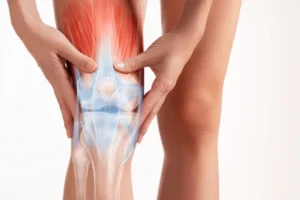First of all,
Everyone experiences pain, which acts as our bodies’ essential warning system. Pain signals are essential for protecting our health, whether they are from a transient headache or the nagging pain of a long-term illness. However, what precisely occurs in our bodies when we experience pain? Investigating the physiology of pain reveals a sophisticated network of chemicals, nerves, and brain regions interacting to produce this basic experience.
The Painful Experience:
Understanding the subjective experience of pain is crucial before delving into its physiological causes. The experience of pain is a complex phenomenon with sensory, emotional, and cognitive aspects. Although the physical feeling of discomfort is referred to as sensory pain, our perception and reaction to pain are influenced by emotional and cognitive factors. Individual differences in these factors can result in varying experiences of pain even when stimuli are similar.
The pathway of nociceptivity
The nociceptive pathway, a specialized network of nerves tasked with identifying and transmitting pain signals, is central to the experience of pain. The body’s sensory receptors called nociceptors are responsible for detecting dangerous stimuli like heat, pressure, and chemicals. Nociceptor activation by these stimuli sets off a series of events that lead to the experience of pain.
Transduction:
Nociceptor conversion of physical stimuli into electrical signals is the first step in the process. Specialized ion channels, such as transient receptor potential (TRP) channels, are necessary for this conversion. TRP channels react to a variety of stimuli, including pressure, temperature, and chemicals.
Transmission:
These electrical signals are created and then move along the A-delta and C fibers, two types of nerve fibers that carry information from the peripheral to the central nervous system (CNS). Sharp, well-localized pain signals are transmitted by A-delta fibers, which are distinguished by their myelinated sheath, whereas dull, diffuse pain sensations are transmitted by unmyelinated C fibers.
Central Processing:
After entering the spinal cord, pain signals are processed further in the dorsal horn of the brain. Here, they can be influenced by a number of substances, including neurotransmitters like serotonin and endorphins as well as descending inhibitory pathways. Signals travel up the spinal cord from there, stopping at relay stations in the brainstem and thalamus before arriving at higher brain regions that are in charge of perceiving and interpreting pain.
Perception and Modulation:
Our perception of pain is greatly influenced by the brain. The somatosensory cortex, insula, and anterior cingulate cortex are among the regions that integrate sensory information with emotional and cognitive elements, thereby impacting our perception and reaction to pain. In addition, the brain has built-in mechanisms for modulating pain, such as the activation of descending pathways that block nociceptive signaling and the release of endogenous opioids.
Pain Types:
Neuropathic pain and nociceptive pain are the two main categories into which pain can be divided. Neuropathic pain results from malfunction or damage to the nervous system itself, whereas nociceptive pain is caused by the activation of nociceptors in response to tissue damage or inflammation. For a diagnosis and treatment plan to be successful, it is essential to comprehend the underlying mechanisms of each type of pain.
Nociceptive Pain:
Nociceptive pain usually has distinct triggers and reactions, and it usually follows a predictable pattern. Acute pain following surgery, injuries, or inflammatory diseases like arthritis are a few examples. In order to treat tissue damage or inflammation, the underlying cause is often addressed. Medications such as nonsteroidal anti-inflammatory drugs (NSAIDs) or opioids for severe pain may be used in this regard.
Neuropathic Pain:
On the other hand, abnormal nerve function or signaling causes neuropathic pain, which manifests as persistent, frequently incapacitating symptoms. Neuropathic pain can be brought on by diseases like diabetic neuropathy, postherpetic neuralgia, and spinal cord injury. Therapies targeted at resolving related psychological and functional impairments may be combined with medications that target nerve signaling pathways, such as anticonvulsants or antidepressants, as part of management strategies.
Persistent pain that lasts longer than the average healing period is referred to as chronic pain. It is caused by a complex interaction between biological, psychological, and social factors. In contrast to acute pain, which has a protective purpose, chronic pain has the potential to become maladaptive and result in a variety of negative physical and psychological effects. Often, a multimodal strategy that addresses the psychological as well as the physical aspects of pain is necessary for effective management.
New Frontiers in Research and Their Prospects:
Neuroscience developments keep illuminating the intricacies of pain perception and processing. Research is ongoing and could lead to the development of more potent interventions and treatments, from figuring out how glial cells function in chronic pain to investigating new targets for pain modulation. Furthermore, the incorporation of technology—such as wearables and neuroimaging—opens up new possibilities for comprehending individual variations in pain perception and developing customized treatments.
In summary:
A fascinating convergence of biological, psychological, and social factors can be seen in the physiology of pain. Researchers and clinicians can better understand and meet the varied needs of people who live with pain by deciphering the complex mechanisms underlying pain perception. Pain is a poignant reminder of our body’s complex defense mechanisms and the never-ending search for relief and healing, regardless of the severity of the injury or condition.
